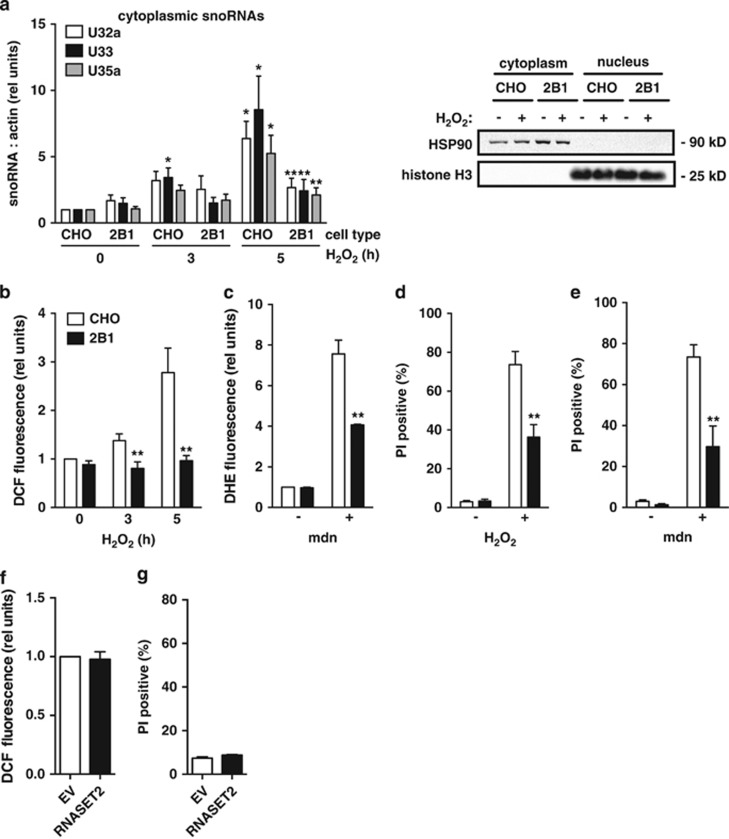Figure 6.
2B1 cells are resistant to oxidative stress. (a, b) CHO and 2B1 cells were treated with 1 mM H2O2 for the indicated times. Cytoplasmic RNA was isolated by sequential detergent extraction and analyzed by qRT-PCR for rpl13a snoRNAs relative to β-actin (a, left). Blots show representative western analysis for hsp90 and histone H3 in cytosolic and nuclear fractions at 5 h (a, right). ROS generation in CHO (open bars) and 2B1 (filled bars) cells was quantified by DCF staining and flow cytometry (b). (c) CHO (open bars) and 2B1 (filled bars) cells were treated with 50 μM menadione (mdn) for 2 h. ROS generation was quantified by DHE staining and flow cytometry. (d, e) CHO (open bars) and 2B1 mutant (filled bars) cells were treated with 2.5 mM H2O2 for 24 h (d) or with 25 μM menadione (mdn) for 6 h (e). Cell death was assayed by PI staining and flow cytometry. (f, g) CHO cells were transfected with empty vector (EV, open bars) or expression plasmid encoding RNASET2 (filled bars). Cells were assessed 24 h later for ROS by DCF staining and flow cytometric analysis (f) and for cell death by PI staining and flow cytometry (g). Graphs report mean+S.E. for a minimum of n=3 independent experiments. *P<0.05 for treated versus untreated; **P<0.05 for 2B1 versus CHO

